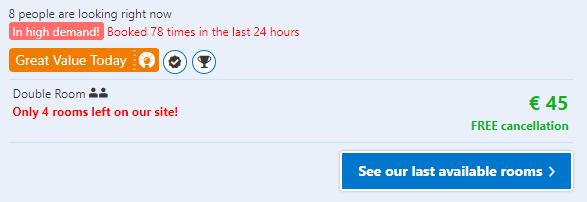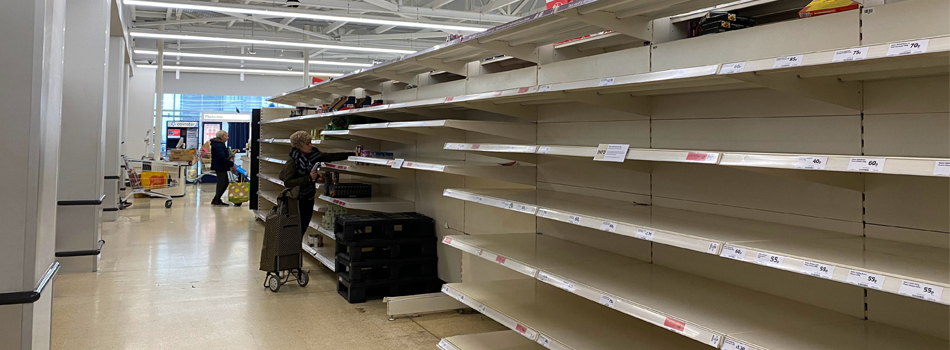In the last couple of weeks, many of us have been faced with empty shelves as we walk around the supermarkets, all preparing for the unexpected during COVID-19. During these times of uncertainty, it is fascinating to delve into behavioural science to help explain the actions many people are taking. In this blog I am going to look into why some people have been panic buying, focusing on both the scarcity effect and social proof heuristic, as well as how we can use behavioural science to inform public policy and strategic thinking of supermarkets to help alleviate this problem.

As people, we are driven by heuristics (mental shortcuts), which are implicit, automatic and not subject to rational deliberation. One of these heuristics that I will focus on in this blog is the scarcity effect, which increases our perception of value of items which are seen as rare and limited in availability or insufficient for the demand. The scarcity signal can be triggered by seeing small amounts of certain items available, which in turn increases people’s purchase motivation. This insight is widely used in marketing such as the message on many holiday comparison websites, “only 4 rooms left on our site”, to encourage us to make a quick decision. Empty shelves represent a very strong signal of scarcity, especially if we are used to the products always being available. It generates a state of panic, propelling us towards actively searching for products and buying much more than we actually need.
Another heuristic triggering panic buying is social proof. We are social animals who always look at other people to create a reference point for appropriate behaviour. Just seeing other people stocking up various items is sufficient enough to generate motivation to reproduce this behaviour. Similarly, telling people that others are behaving in a certain way will effectively encourage others to act in the same way. This heuristic works both ways, also applying to undesired behaviour – a phenomenon known as the boomerang effect. A classic example of this is a sign put up by the authorities of The Petrified Forest in Arizona. It read “Many past visitors have removed the petrified wood from the park, changing the natural state of the Petrified Forest”. After placing this sign in the woods, there was actually an increase of theft of the wood, rather than a decrease, due to it seeming like a social norm.

The above example shows that conventional persuasion attempts can be counterproductive. This is also visible in the recent coronavirus panic buying. The government and supermarkets acknowledged the problem and tried to convince people “to think of others” and not buy more than they need. The appeals were accompanied in media by pictures of empty shelves, long queues to check outs with shoppers’ trolleys filled up to the brim, people fighting for toilet paper and so on. This generated both scarcity and social proof signals, which only exacerbated the problem. Instead, the media could show stockpiles of food and other items in warehouses ready to be delivered to shops. This would reduce the perception of scarcity, ensure the public that the items are available, and lower motivation for hoarding.






